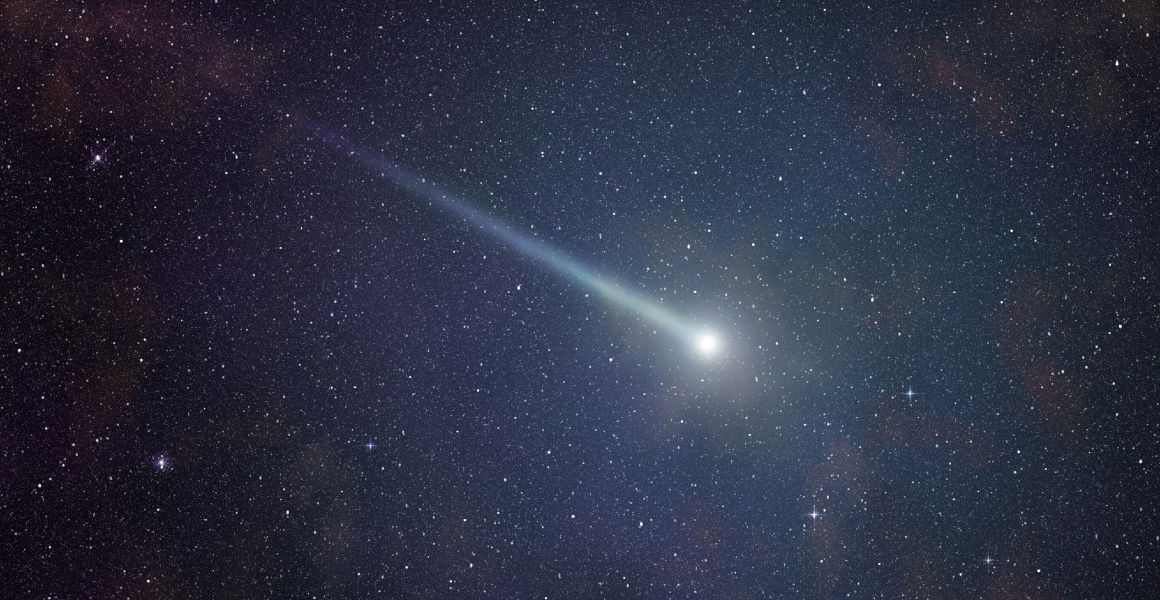An orange-sized space rock which blazed across the skies yesterday probably didn't make it to Earth.
Researchers believe that the rock, which originated in the outer asteroid belt, burnt up before it could hit the ground.

The fireball is estimated to have passed over Oxford in the direction of the Midlands, but was seen from much further afield. Image © paulista/Shutterstock
An orange-sized space rock which blazed across the skies yesterday probably didn't make it to Earth.
Researchers believe that the rock, which originated in the outer asteroid belt, burnt up before it could hit the ground.
A space rock spotted falling across northern Europe on Monday 9 January burnt up as a fireball in the atmosphere, researchers believe.
Observers across England, Wales and the Netherlands saw a shooting star blazing across the sky last night as the rock travelled through Earth's atmosphere. Footage captured on dashboard cameras, video doorbells, mobile phones, and dedicated camera networks was subsequently analysed to find out more about the fireball.
Following analysis by the UK Meteor Network (UKMON), researchers believe that the rock simply wasn't large enough to make it to the ground, so it can't be called a meteorite.
Dr Ashley King, an expert on meteorites at the Museum and member of the UK Fireball Alliance (UKFAII), says, 'The fragment came from somewhere in the outer asteroid belt, and hit Earth's atmosphere at around 10 kilometres per second which is quite slow for these rocks.'
'This would normally be favourable for it to fall to Earth. However, as the rock was quite small, being around the size of an orange and weighing less than 100 grams, we think that none of the material survived its journey through the atmosphere and so it is very unlikely that any of it made it to the ground.'
This fireball comes almost two years after the Winchcombe meteorite fell in the eponymous Gloucestershire town. The majority of the Winchcombe meteorite, as well as the driveway it fell on, is now a part of the Museum's collections where it is improving our understanding of the early solar system.
A fireball at 8 pm last night was reported by 500+ members of the public and was recorded by 13 cameras.https://t.co/m01st2bCqT pic.twitter.com/WobbFTKIpG
— UK Meteor Network (UKMON) (@UKMeteorNetwork) January 10, 2023
Having been ejected from the asteroid belt, the meteorite would have travelled hundreds of millions of kilometres before coming into the vicinity of Earth.
At around 20.00 GMT on 9 January, it was spotted falling in the UK. It was recorded falling on many of the UKFAII's cameras, as well as countless dashboard cameras and video doorbells.
This footage suggests that it passed over Oxford and west of Milton Keynes, continuing towards Northampton where the fireball was extinguished at an altitude of around 35 km.
'Had it been large enough, it probably would have landed somewhere in the Midlands, but unfortunately we don't think anything made it to the ground this time.'
While researchers are disappointed that the rock did not fall to Earth, they are pleased by how rapidly they were able to respond.
'We should get two to three small meteorite falls in the UK each year, and now we have a huge network of cameras we're seeing more and more of them,' Ashley explains. 'This is a change from, say, 20 years ago, where maybe only a few people would have recorded them.'
'The proliferation of cameras and social media makes it more likely we can quickly find meteorites which do make it to the ground in the UK. After the Winchcombe meteorite, the public are also more aware of these events, so we have a better chance to find meteorites now than we ever have before.'

Discover more about the natural world beyond Earth's stratosphere.
Don't miss a thing
Receive email updates about our news, science, exhibitions, events, products, services and fundraising activities. We may occasionally include third-party content from our corporate partners and other museums. We will not share your personal details with these third parties. You must be over the age of 13. Privacy notice.
Follow us on social media